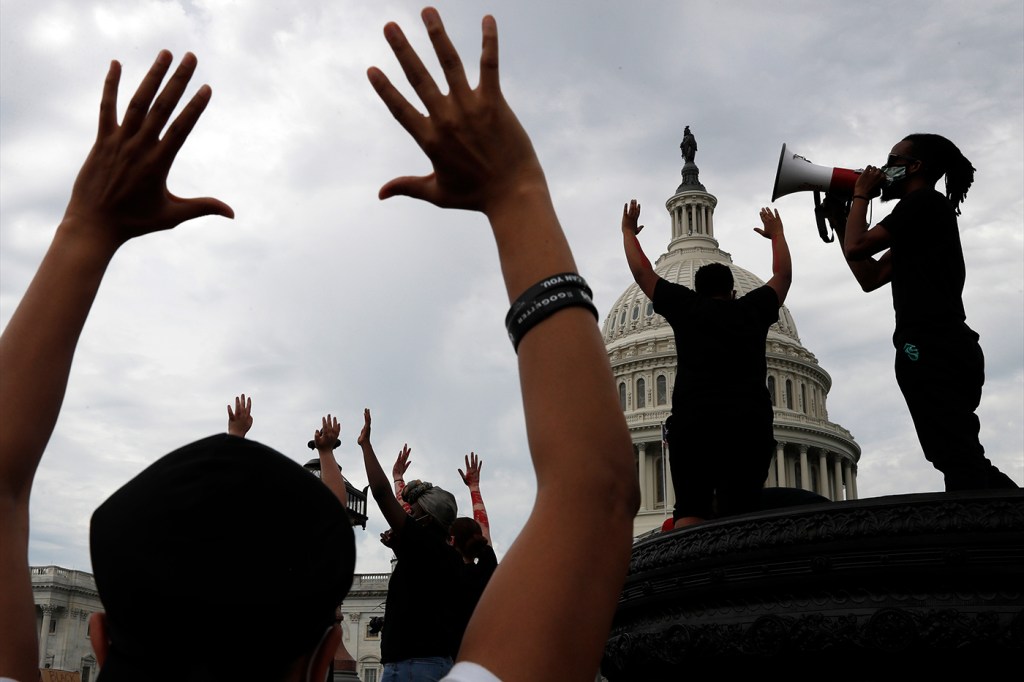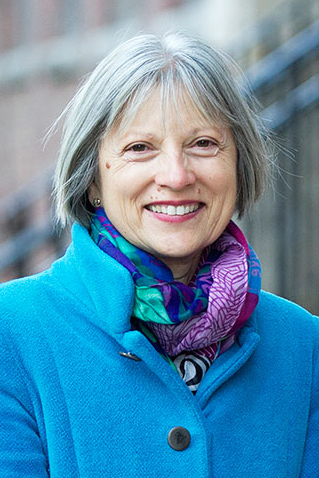Are peaceful protests more effective than violent ones?

As unrest erupts across the world after the killing of a Black man, George Floyd, by a white police officer, even some peaceful protests have descended into chaos, calling into question the efficacy of violence when it comes to spurring social change.
“There’s certainly more evidence that peaceful protests are more successful because they build a wider coalition,” says Gordana Rabrenovic, associate professor of sociology and director of the Brudnick Center on Violence and Conflict.

Gordana Rabrenovic is an associate professor of sociology and director of the Brudnick Center on Violence and Conflict. Photo by Matthew Modoono/Northeastern University
Who’s responsible for inciting this violence—the protesters or the police—is another debate entirely. But, Rabrenovic says, one thing is clear: in order for a movement to gain support and inspire lasting change, peace and consensus are essential.
“Violence can scare away your potential allies. You need the people on the sidelines to say, ‘This is my issue, too,’” she says. “For the people who say, ‘All lives matter,’ that’s true, but not all lives are in danger. You need to convince them.”
Still, it’s not always easy, or even feasible, for groups of oppressed people to take this moral high road, Rabrenovic says.
“The system doesn’t work for them,” she says. “They may think the only way to deal with the system is to destroy it.”
Black people in the U.S. are not only three times more likely to be killed by police than white people, but they’re also less likely to be armed than white people during these interactions with police.
For Black people who experience violence at the hands of the people and institutions that are supposed to protect them, the question becomes: “If they use violence, why shouldn’t we use violence?” Rabrenovic says. “They know that violence works, otherwise they wouldn’t use it.”
Exactly how that violence manifests is another matter entirely, but, Rabrenovic says, one thing is almost always true: violence is the spark that ignites the movement.
The civil rights movement of the 1960s is one example. The overall ethos of Martin Luther King Jr.’s movement was peace. But the catalyst was violence—hundreds of years of lynchings, lawful inequality, and oppression.
In fact, peace was strategically used during the civil rights movement to emphasize the violence Black people in the U.S. endured. Protesters were intentionally peaceful to prevent any question of who started the violence and whether it was justified. The results were inarguable visuals of peaceful Black protesters being attacked by dogs and beaten by police.
“Even peaceful civil rights movements are violent because it’s violence that motivates people to take action,” Rabrenovic says. Translating a violent history into a peaceful future is the hard part.
“Violence might be the quickest way to achieve your goals, but in order to sustain your victory, you would need to use coercion and have some kind of apparatus in place that keeps people in constant fear of punishment,” she says. “And nobody wants to live like that.”
While the George Floyd protests are a good starting point, the protests alone aren’t enough to sustain an entire movement, Rabrenovic says. “We need to give people other tools.”
Voting is one example. “We need to vote,” she says. “The government is us.”
One could argue that for Black and other disenfranchised people in the U.S., voting seems futile. But Rabrenovic counters, “If voting didn’t work, there wouldn’t be voter suppression.”
“You can’t suppress everyone,” she says. “That’s why it’s important to build a wide coalition, to bring in as many people as you can.”
We can’t keep living with only ourselves in mind. We need each other, she says. And protests are only the beginning.
For media inquiries, please contact media@northeastern.edu.





